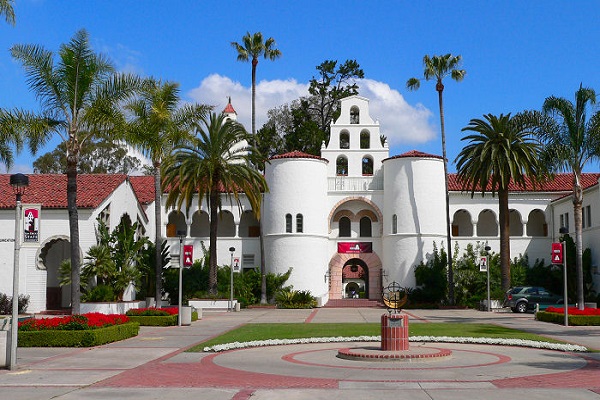San Diego State University: SDSU Nanoengineers Create Structure to Measure Brain Activity
San Diego State University engineering researchers have created a nanomaterial that will allow for measuring both electrical and chemical brain activity.
In an SDSU NanoFabrication Lab article in the American Carbon Society’s CARBON journal, they introduce hybrid graphene glassy carbon as a new nanomaterial that offers great promise for energy storage and ultrasensitive sensors.
As the name suggests, nanofabrication works with materials that have dimensions measured in nanometers. “Nano,” meaning one-billionth, means the lab works with items in mind-bogglingly small scales. To put this into perspective, atoms and molecules, the smallest pieces of everything around us, are measured in nanometers.
The SDSU Nanofabrication Lab, or NanoFab Lab, is led by mechanical engineering professor Sam Kassegne and former doctoral graduate student Surabhi Nimbalkar, who played a key part in the discovery of the new material.
Funded by the National Science Foundation’s Center for Neurotechnology, which primarily focuses on brain materials processing, the team was tasked to research materials and technology for better and efficient brain-computer interfaces. As the Center for Neurotechnology primarily focused on recording from the brain using only classic carbon materials, the team wanted to optimize the processes.
“Though carbon materials worked well enough, we wanted something better,” said Kassegne.
With that, the team decided to combine what they endearingly call the two “gold standard” materials from the family of carbon to create a hybrid material using graphene, the best material for electrical conductivity, and glassy carbon, the best material for measuring electrochemistry of the brain. “We wanted to combine the best of both properties to create a new hybrid material,” said Nimbalkar.
Hybrid Creations
Using the NanoFab Lab to synthesize the material, Nimbalkar compared the two different properties to understand how they each interacted. She found that though both are carbon materials, they possess different properties. From there, the team combined the two to create hybrid graphene glassy carbon material and tested the new hybrid material with an experimental model and implemented it into a molecular dynamics computer simulation model.
“After comparing properties, we’ve seen that we have synthesized a material that has far better properties in terms of charge storage compared to classic carbon,” said Nimbalkar.
The team collaborated alongside other student researchers and collaborators, including co-authors Brinda Kodira Cariappa, Abhivyakti Gautam, James Bunnell, Rhea Montgomery-Walsh, and Shize Yang of Arizona State University. The team also worked with SDSU colleagues in the chemistry department, and a number of external collaborators, particularly neuroengineer Chet Moritz at the University of Washington.
“Working on the glassy carbon project was the highlight of my academic journey at SDSU. It was a great honor to be working in Dr. Kassegne’s NanoFab laboratory to do research alongside other fantastic researchers, especially Dr. Nimbalkar,” said Tri Nguyen, a recent graduate who is now performing developmental work on unmanned aircrafts as a system engineer at Northrop Grumman.
New Applications
The hybrid graphene glassy carbon material, among other things, will allow for recording of electrical brain signals, stimulation of brain tissue, and also measurement of brain chemistry.
“For instance, in some experimental studies, an implant can be placed inside the brain to record brain activity. A super capacitor made from this hybrid material will then allow energy storage for devices for on-chip power generation, and also measure both electrical and chemical activity — leading to a holistic and complete research experience,” said Kassegne.
Other areas of research that this discovery will apply to include IoT sensors, nanomanufacturing for high-density microprocessors, memory chips, and even measuring analytics for polluted environments, said Kassegne: “This could enable measuring very small quantities of biochemical analytes, including virus detections in public space such as classroom environments.”
As for the future of the applications of hybrid graphene glassy carbon, Kassegne said, the opportunities are very significant and far-reaching.

